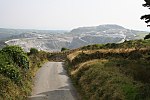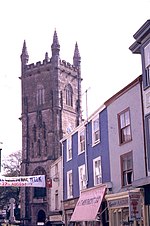Trewoon

Trewoon (; Cornish: Trewoon) is a village in south Cornwall, England, United Kingdom. It is on the western outskirts of St Austell, on the A3058 road and is a linear settlement, with housing estates, a village hall, park and playing fields. The village has many amenities and local businesses: a garage (mechanical operations only), a post office, a Convenience store, hairdressers, "The White Pyramid" pub, and Trinity Methodist church. Trewoon is mentioned in the Domesday Book (as Tregoin: held by Hamelin from Robert, Count of Mortain) and is part of the St Mewan Parish and had its own manor known as Hembal Manor. China clay has played a big part in the village's history following its discovery by William Cookworthy.
Excerpt from the Wikipedia article Trewoon (License: CC BY-SA 3.0, Authors, Images).Trewoon
Cooperage Road,
Geographical coordinates (GPS) Address Nearby Places Show on map
Geographical coordinates (GPS)
| Latitude | Longitude |
|---|---|
| N 50.3403 ° | E -4.8178 ° |
Address
Cooperage Road
Cooperage Road
PL25 5SH , St. Mewan
England, United Kingdom
Open on Google Maps







